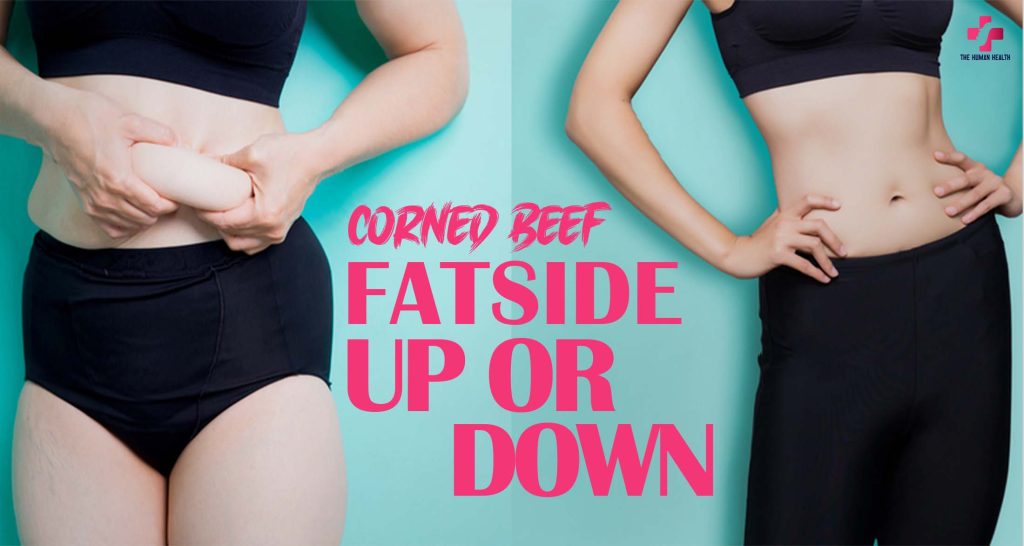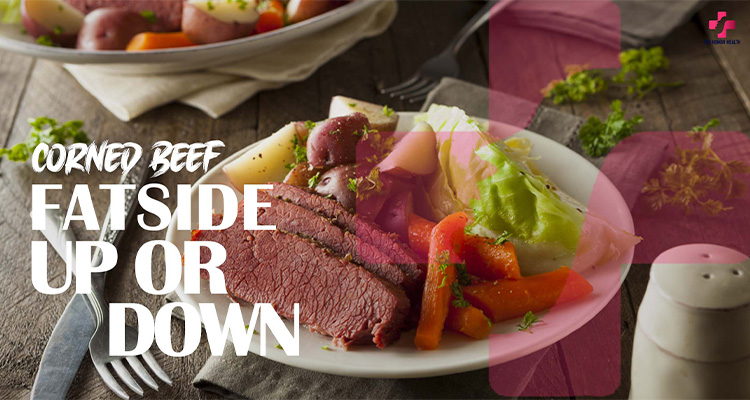Corned Beef Fat Side Up Or Down
Corned Beef: Fat Side Up or Down?
Cooking corned beef can be tricky. Should you put the fat side up or down? This choice affects how juicy and tasty the meat will be. The right way gives the best flavor.
What Is Corned Beef?
Corned beef is brisket soaked in salty water with spices. This makes it tasty and tender. People love it on St. Patrick’s Day and in sandwiches. Cooking it the right way makes it even better.
Should the Fat Side Be Up or Down?
Brisket has a fat layer on one side. How you place it while cooking changes the taste and texture. Some people cook it fat side up, others fat side down. Both ways work.
Cooking Fat Side Up
Putting the fat side up means the fat melts over the meat. This can:
- Keep the meat juicy by spreading fat over it.
- Add more flavor as the fat melts.
- Work well in the oven, where heat surrounds the meat.
But in liquid, the fat may not melt the same way.
Cooking Fat Side Down
Many cooks say fat side down is better, especially in a slow cooker or on the stove. This method:
- Stops the meat from sticking to the pot.
- Protects the meat from direct heat so it stays tender.
- Helps cook it evenly since heat comes from below.
Best Way to Cook Corned Beef
The best way depends on how you cook it:
- Oven: Fat side up works best.
- Slow Cooker or Stovetop: Fat side down keeps it soft.
Tips for Cooking
- Cook on low heat for a long time to make it tender.
- Keep it covered in liquid so it stays juicy.
- Slice against the grain for soft, easy-to-eat pieces.
Conclusion
Fat side up or down? It depends on how you cook it. If roasting, put the fat side up. If using a slow cooker or stovetop, put it fat side down. Either way, slow cooking makes the meat juicy and full of flavor.
Should You Cook Corned Beef Fat Side Up or Down?
Corned beef is a tasty dish, especially on St. Patrick’s Day. Cooking it the right way makes it soft and full of flavor. One big question is whether to cook it with the fat on top or bottom. The answer depends on how you cook it. Let’s look at both ways.
What Is the Fat Cap?
Corned beef comes from the brisket, a tough cut of meat. To make it tender, you need to cook it slowly. Most corned beef has a layer of fat on one side. This fat adds flavor and keeps the meat juicy. But should the fat face up or down?
Cooking Fat Side Up
Some people cook corned beef with the fat side up. Here’s why:
Adds Moisture – The fat melts and soaks into the meat, making it juicy.
Looks Better – The fat stays on top, making the meat look nice.
Prevents Drying Out – The fat helps lock in moisture.
But this method doesn’t work well if the meat is cooked in water. The liquid stops the fat from melting into the meat. It can also leave a greasy layer.
Cooking Fat Side Down
Others prefer cooking it with the fat side down. Here’s why:
Protects the Meat – The fat blocks heat, keeping the meat from drying out.
Cooks Evenly – The meat cooks at the same rate all over.
Less Grease – The meat stays tender without getting too oily.
One downside is that the fat won’t melt into the meat as much. But if you cook it in liquid, the meat will still stay moist.
Which Way Is Best?
Boiling or Slow Cooking: Fat side down is best because the meat stays under the water and stays soft.
Oven Baking or Roasting: Fat side up works better since the fat melts over the meat.
Smoking: Fat side up is best so the fat melts and adds flavor.
Final Thoughts
The best way to cook corned beef depends on how you’re cooking it. For boiling or slow cooking, keep the fat side down. For roasting or smoking, fat side up is better. No matter which way you choose, cooking it slow and low will make it tender and delicious.
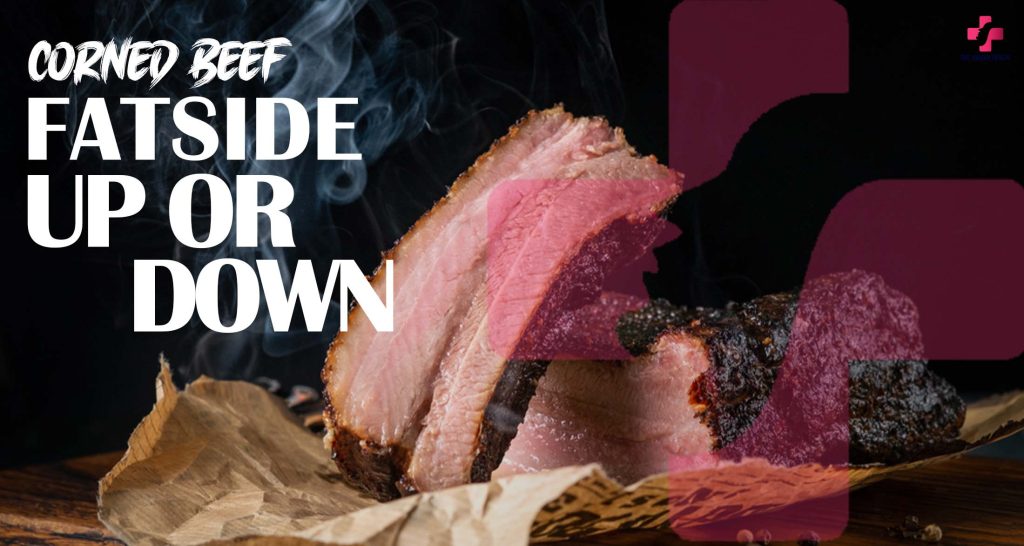
Should You Cook Beef Fat Side Up or Down?
A lot of people wonder whether to cook beef with the fat side up or down. The answer depends on how you cook it, the cut of meat, and how you want it to taste.
Why Fat Placement Matters
Fat makes beef taste better and keeps it juicy. As the meat cooks, the fat melts and gives off tasty juices. The way the fat interacts with the meat depends on where it is.
If the fat is on top, it melts and can cover the meat. This helps keep the meat moist. Many cooks do this for brisket and prime rib to get the best flavor.
Placing the fat on the bottom helps too. It stops the meat from getting too hot, which keeps it from burning.
Best Fat Placement for Each Cooking Method
- Smoking or Slow Cooking
When smoking beef, most cooks say to put the fat side down. This keeps the heat from hitting the meat directly, and the fat helps keep it moist.
If you put the fat side up, the juices might run off instead of soaking into the meat. - Roasting in an Oven
When roasting in an oven, it’s best to put the fat side up. As the fat melts, it drips onto the meat and keeps it moist. This works great for cuts like prime rib.
If the fat is on the bottom, it won’t baste the meat as much. - Grilling or Searing
For grilling or searing, fat placement matters less because cooking times are shorter. But putting the fat side down first can help make a crispy crust and let some fat melt. - Braising or Slow Cooking
For slow-cooked beef like pot roast, fat doesn’t matter as much. Since the meat cooks in liquid, the fat melts into the broth and adds flavor.
Conclusion
The best way to cook beef depends on how you do it:
Smoking or grilling? Fat side down.
Roasting in the oven? Fat side up.
Slow cooking? Either way works.
By choosing the right method, your beef will stay juicy and taste great.
Should Fat Side Be Up or Down in a Crockpot?
When cooking beef in a crockpot (slow cooker), many people wonder if the fat side should be up or down. This can affect the flavor, texture, and overall result of the dish. Knowing how fat works during slow cooking will help you make the best choice. Let’s take a look at how fat position can impact your meal.
Why Fat Matters in Slow Cooking
Fat is important when cooking beef in a slow cooker. It adds flavor, moisture, and tenderness. As the meat cooks, the fat melts and soaks into the meat, making it juicy and flavorful. Since a crockpot uses low, slow heat, the fat has plenty of time to break down. The position of the fat affects how it melts and how the final dish tastes.
Fat Side Down: A Protective Shield
A common tip is to place the fat side down. The fat acts like a shield. It keeps the meat from touching the heat source at the bottom of the crockpot. This helps prevent the meat from becoming dry or tough. The fat side down also helps the meat stay juicy.
Since heat comes from the bottom and sides of the crockpot, placing the fat side down keeps the fat from melting too quickly. Instead, it melts slowly, keeping the meat moist and tender.
Fat Side Up: Basting the Meat
Another method is to place the fat side up. This allows the fat to melt and drip down over the meat. As the fat melts, it helps baste the meat, keeping it moist and flavorful. The fat will soak into the meat, helping it stay juicy and tender.
This method works well for cuts like brisket or pork shoulder, where the fat layer is thick. The fat melts slowly, keeping the meat moist and tender.
Fat Side Up or Down: What’s the Difference?
The choice of fat side up or down affects how the fat melts. When the fat is down, it melts slowly, forming a shield that protects the meat. This helps the meat stay tender and juicy.
When the fat is up, the fat melts and drips down, basting the meat. This is great for leaner cuts, helping them stay moist. However, the fat may not fully soak into the meat, which can make it less juicy.
Tips for Cooking Beef in a Crockpot
Fat Side Down for Tough Cuts: For tougher cuts like chuck roast, brisket, or pork shoulder, fat side down is best. It keeps the meat tender and prevents it from drying out.
Fat Side Up for Flavor: For leaner cuts like round or sirloin, fat side up works well. The fat drips down and adds flavor and moisture.
Think About Cooking Time: Since the crockpot cooks slowly, the fat will melt over time. If you want it to melt evenly, you can turn the meat halfway through cooking.
Conclusion
Whether the fat side is up or down depends on the cut of meat and your preference. For tougher cuts, fat side down keeps the meat moist. For leaner cuts, fat side up lets the fat add flavor and moisture. Either way, the slow cooking process ensures the fat melts into the meat, making it tender and delicious.
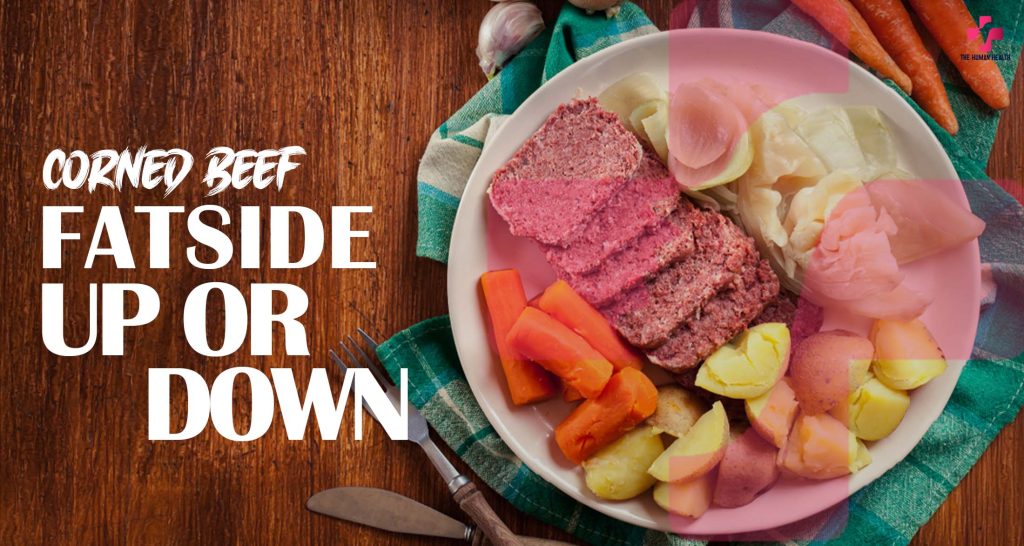
What To Do With Corned Beef Fat?
Corned beef fat is tasty and can be used in many ways. Here are some easy ideas for using it:
- Cook with It
Use corned beef fat to cook vegetables, onions, or garlic. It adds a beefy flavor to anything you cook. You can also use it instead of butter or oil in soups, stews, or gravies. - Roast Vegetables
Try pouring corned beef fat over potatoes, carrots, or other vegetables before roasting. It gives the veggies a rich, beefy taste. Add your favorite herbs before cooking. - Breakfast Ideas
Corned beef fat is great for frying eggs, hash browns, or making breakfast hash. It adds a savory flavor to your meal. Use it to sauté potatoes or onions for a crispy texture. - Add to Soups
Add corned beef fat to soups and stews to boost the flavor. It adds a nice savory taste, especially in beef stews or dishes with cabbage and potatoes. - Make Gravy
Use the leftover corned beef fat to make gravy. Mix it with flour to make a thick base, then add broth or water. Pour it over potatoes, vegetables, or corned beef for extra flavor. - Popcorn Snack
Try using corned beef fat to pop popcorn. It gives the popcorn a unique, meaty flavor. Add a little sea salt for extra taste. - Bake with It
Use corned beef fat in bread recipes. It adds a beefy taste to savory breads like focaccia. The fat also makes the bread denser and richer. - Make Sauces
Use corned beef fat in sauces instead of butter or cream. It adds a deep, beefy flavor to gravies or creamy sauces for meats.
Conclusion
Don’t throw away corned beef fat. It can add flavor to many dishes, like vegetables, soups, and sauces. Use it to make your meals taste even better while cutting down on waste.
Is Corned Beef Fat Good For You?
Corned beef is a tasty dish, especially for holidays like St. Patrick’s Day. It is made by soaking beef brisket in salt and spices. Many people enjoy it, but they wonder if the fat in corned beef is healthy. Let’s look at what’s in corned beef, how fat affects health, and what it means for your diet.
What’s in Corned Beef?
Corned beef has a lot of protein, which helps build and repair muscles. A 3-ounce serving gives you about 22 grams of protein. It also has important nutrients like iron and B vitamins. Iron helps your body make red blood cells, while B vitamins help turn food into energy.
But corned beef also has fat, especially saturated fat. A 3-ounce portion has about 10 grams of total fat, with 4 grams of that being saturated fat. Most of the fat is found in the muscle and fatty layers around the beef.
Is the Fat in Corned Beef Healthy?
The fat in corned beef includes different kinds: saturated fat, monounsaturated fat, and a little polyunsaturated fat. Fat is important for your body. It gives you energy, helps cells work, and helps your body use vitamins. But not all fats are the same.
Saturated Fat
Saturated fat, which is found in corned beef, can cause problems. Eating too much can raise your “bad” cholesterol (LDL). This can lead to heart disease and stroke. Health experts say we should limit saturated fat to about 10% of our daily calories. For a 2,000-calorie diet, that’s about 22 grams of saturated fat. The 4 grams of saturated fat in a 3-ounce serving of corned beef can add up quickly, especially if you eat other fatty foods.
Healthier Fats
Some fats are healthier for you, like monounsaturated and polyunsaturated fats. These can help lower bad cholesterol and improve heart health. Corned beef has some of these healthier fats, but not as much as it has saturated fat.
Tips for a Healthy Diet
Corned beef can be part of a healthy diet if you eat it in moderation. It should not be the main fat source in your diet. Instead, try adding healthy fats like olive oil, nuts, seeds, or fatty fish such as salmon.
If you are worried about the fat, choose leaner cuts of beef or trim the fat off before cooking. This will reduce the fat in the dish.
Conclusion
Corned beef fat is not the healthiest, but it can be part of a balanced diet. Pay attention to how much saturated fat you eat, as it can affect your heart. If you want to enjoy corned beef, try pairing it with vegetables and whole grains to make your meal healthier.
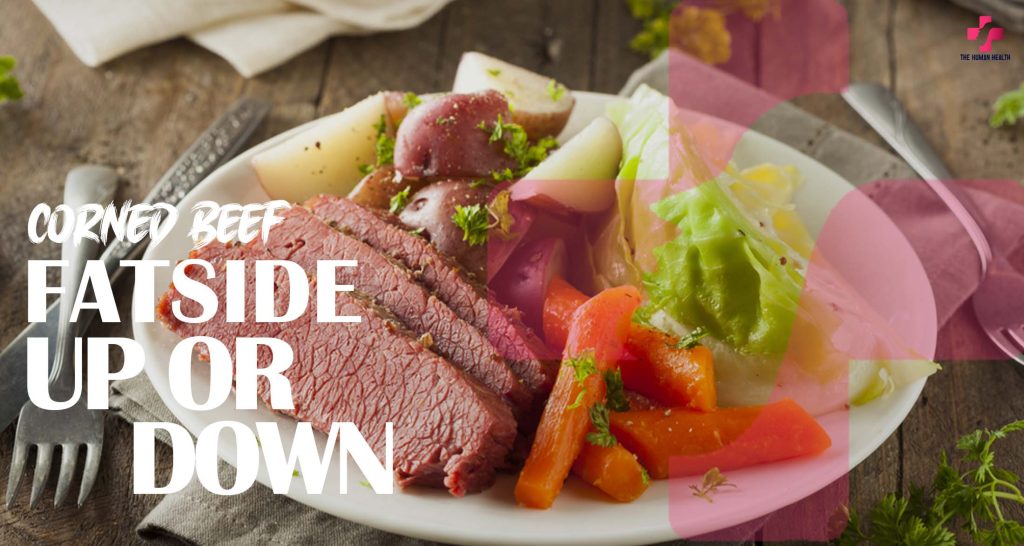
Is it OK To Eat Corned Beef Everyday?
Corned beef is a tasty food that people eat, especially on St. Patrick’s Day. But is it okay to eat it every day? Let’s look at why eating corned beef too often might not be the best idea.
What’s in Corned Beef?
Corned beef is made from beef, salt, and spices. A small serving (about 3 ounces) has about 210 calories, 14 grams of fat, 23 grams of protein, and a lot of sodium (about 1,000 milligrams). Protein is good for you, but eating too much fat and sodium can be bad for your health.
Too Much Sodium is Bad
Corned beef has a lot of sodium. The World Health Organization says we should eat no more than 2,000 milligrams of sodium a day. The American Heart Association recommends even less—1,500 milligrams. A small serving of corned beef can have half or more of that. Eating too much sodium can lead to high blood pressure, heart problems, and kidney damage. Eating corned beef daily might give you too much sodium.
Corned Beef and Your Heart
Corned beef also has a lot of unhealthy fat. Eating too much of this fat can raise bad cholesterol in your blood, which increases the chance of heart disease. It’s important to eat fats from healthier sources, like nuts, seeds, and fish, to protect your heart.
Calories and Weight Gain
Corned beef can also add extra calories to your diet. If you don’t burn those calories through exercise, you might gain weight. Keeping a healthy weight is important to avoid diseases like diabetes, heart disease, and cancer.
What’s in Canned Corned Beef?
Some people eat canned corned beef. These cans often have preservatives and artificial chemicals. Some of these chemicals might increase the risk of certain cancers. Eating too much processed food like this can be risky.
Eat Corned Beef in Moderation
Corned beef is delicious, but it’s best to eat it in moderation. Enjoy it now and then, but don’t eat it every day. Try to have a variety of healthy foods in your diet, like fruits, vegetables, and lean proteins. Choose leaner cuts of corned beef and eat smaller portions to keep your diet healthy.
In short, eating corned beef daily is not a good idea because it’s high in sodium, fat, and calories. Instead, aim for a balanced diet with many different types of food to stay healthy.
Is Beef Fat Good or Bad For You?
Beef fat is a type of animal fat. Some people wonder if it is good or bad for your health. The answer depends on how much you eat and the type of beef fat. It also depends on your health and diet.
What’s in Beef Fat?
Beef fat, also called tallow, is mostly saturated fat. It also has some unsaturated fat and cholesterol. One serving of beef fat has many calories, so if you’re trying to lose or maintain weight, it’s important to eat it in small amounts.
Many people thought that eating too much saturated fat could lead to heart problems. But new studies show that it may not be as bad as we once thought.
Benefits of Beef Fat
Beef fat can be good for you in small amounts. It has important nutrients like omega-3 fatty acids, which can help with heart and brain health. Omega-6 fatty acids are also present in beef fat.
Beef fat has vitamins A, D, E, and K. These vitamins are important for your immune system, skin, eyes, and bones. If the beef is grass-fed, it has even more of these vitamins.
Some people on special diets, like the ketogenic diet, say that beef fat helps them have energy. They use it as fuel because it’s easy for the body to burn fat instead of carbs.
Risks of Beef Fat
While beef fat can be healthy in small amounts, eating too much may cause health problems. The main issue is its high amount of saturated fat. Too much of it may raise bad cholesterol and increase the risk of heart disease.
Beef fat also has a lot of calories. Eating too much can cause weight gain, especially if you don’t get much exercise.
The kind of beef fat you eat matters too. Grass-fed beef fat is healthier because it has more omega-3 and less omega-6. Conventionally raised beef has more omega-6, which can cause inflammation in the body.
Conclusion
Beef fat can be both good and bad for you. It’s healthy in small amounts. It provides vitamins and important fats. But eating too much, especially from conventionally raised beef, can raise the risk of heart disease and weight gain. If you eat beef fat, choose lean cuts and grass-fed beef when you can.
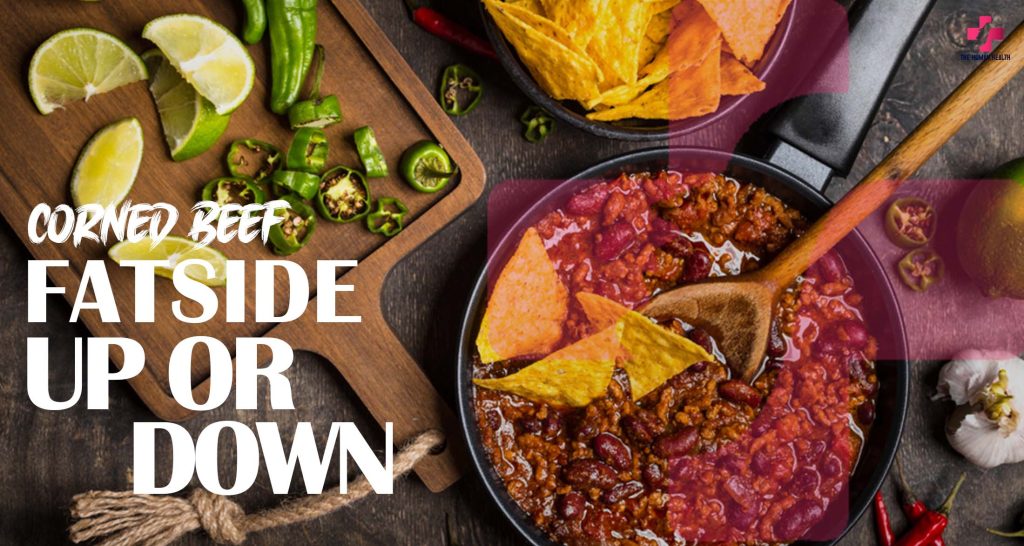
How Do You Use Beef Fat?
Beef fat, or tallow, is a helpful and rich ingredient. It comes from cows and has many uses in cooking, skincare, and even as fuel. Here are some easy ways to use beef fat:
- Cooking and Frying
Beef fat works great for frying and cooking. It has a high smoke point of 400°F (204°C), making it perfect for frying, roasting, or deep frying. It adds a rich, savory flavor to food. For example, French fries fried in tallow are crispy and tasty. Beef fat is also good for searing steak, giving it a crispy crust and juicy inside.
You can use beef fat to grease pans for baking or cooking vegetables. It keeps food from sticking and adds great flavor to meats and vegetables, or even baked goods like biscuits.
- Making Sauces and Gravies
Beef fat is often used to make sauces and gravies. It gives them a rich, tasty base. For gravy, beef fat is mixed with flour to thicken it and add flavor. You can also use tallow instead of butter or oil to make sauces, like béarnaise or hollandaise, which gives them a fuller taste. - Baking
Tallow is a great substitute for butter or lard in baking. It’s perfect for pie crusts, biscuits, or cookies. It makes them flaky and tender. Beef fat also adds a savory flavor to baked goods, balancing sweetness or making savory flavors stronger. - Making Soap
Beef fat has been used in soap-making for years. When mixed with lye and water, it turns into soap. Tallow makes firm, creamy soap that is moisturizing and gentle on the skin. It’s a great choice for homemade soaps. - Skincare and Beauty Products
Beef fat is used in skincare products. It’s full of fatty acids and vitamins like A and E, which are good for the skin. It’s used to make moisturizers, balms, and lotions. Tallow is great for dry or sensitive skin because it helps lock in moisture and protect the skin. - Candle Making
Tallow can be used to make candles. Before paraffin wax, people used tallow for candles. Some people still use it for homemade candles, especially for sustainability or history. - Animal Feed
Beef fat can be added to animal feed. It helps give animals energy and vitamins that help them grow strong and healthy. - Fuel for Lamps
Long ago, beef fat was used for lamps. Though it’s not as common now, tallow can still be used as lamp oil. This was important before electricity, when animal fat was used for light.
Conclusion
Beef fat is useful in many ways. It’s good for cooking, skincare, and more. It adds flavor in the kitchen and moisturizes the skin. Tallow also has a long history as a light source and fuel.
What Type Of Fat Is In Corned Beef?
Corned beef is a tasty meat often enjoyed on St. Patrick’s Day. It’s made by curing beef with salt, spices, and sometimes sugar. Corned beef is rich in protein and fat. The fat makes it flavorful and tender. Here’s what you should know about the fat in corned beef!
Types of Fat in Corned Beef
Corned beef has two main kinds of fat: saturated fat and unsaturated fat. Saturated fat is the most common type, but there are small amounts of monounsaturated fat.
Saturated Fat
Saturated fat is the main fat in corned beef. It helps make the meat taste rich. But eating too much of it can raise bad cholesterol in the blood. This can increase the risk of heart disease. A 3-ounce serving of corned beef has around 3 to 4 grams of saturated fat. People who watch their cholesterol should enjoy it in small amounts.
Monounsaturated Fat
Monounsaturated fat is a healthier type of fat. It can help lower bad cholesterol. While corned beef has some monounsaturated fat, it has less than other foods like olive oil or nuts. But it can still help balance your diet if eaten in moderation.
Polyunsaturated Fat
Polyunsaturated fat is good for your heart, but corned beef only has a tiny bit of it. You can find more polyunsaturated fat in fish, seeds, and certain oils. Corned beef doesn’t add much of this fat to your diet.
Omega-3 Fatty Acids
Omega-3s are a type of polyunsaturated fat found in fish like salmon and sardines. They are great for your heart. Corned beef doesn’t provide omega-3s, but it may have tiny amounts based on the beef’s quality and diet.
Conclusion
Corned beef is mostly made of saturated fat, which gives it a rich taste. It also has small amounts of monounsaturated and polyunsaturated fats. Since it has a lot of saturated fat, it’s best to eat corned beef in moderation. When part of a healthy diet, corned beef can be a tasty treat!
Corned Beef Fat Side Up Or Down Conclusion?
When you cook corned beef, you might wonder whether to put the fat side up or down. Both ways work, but knowing the difference can help you choose what’s best for you. It’s all about your taste and the results you want.
Fat Side Up: The Popular Choice
Many people say to cook corned beef fat side up. The fat keeps the meat moist as it cooks. The fat melts and soaks into the meat, making it juicy and tasty. This is great for lean cuts of corned beef. If you cook it in the oven, the top can get crispy, especially if you broil it for a few minutes.
The fat also helps keep in the flavor. It stops the seasonings and liquids from drying out. This method works well if you use a slow cooker or oven. The fat melts slowly, making the meat tender and juicy.
Fat Side Down: A Less Common But Effective Method
Some people like to cook corned beef fat side down. The fat shields the meat from heat, keeping it from drying out. If you cook it in a slow cooker, the fat melts into the liquid, adding more flavor to the broth.
If you cook corned beef on the stovetop, fat side down spreads the fat evenly. This helps the meat cook well and stay tender, especially if you simmer it in a flavorful liquid. While this method doesn’t make a crispy top, it keeps the meat moist.
The Final Verdict: Which Method Is Best?
In the end, whether you cook corned beef fat side up or down depends on what you like. If you want a crispy top and lots of flavor, fat side up is a good choice. It’s great for oven roasting or broiling, where the top can turn brown and crispy.
If you want the meat to be tender and juicy, fat side down might be better. The fat melts into the cooking liquid, keeping the meat moist and full of flavor.
No matter what you choose, remember to cook the corned beef slowly and gently. Both ways can give you a delicious, tender meal. So, whether you pick fat side up or down, you’ll enjoy a tasty dish of corned beef.
